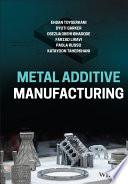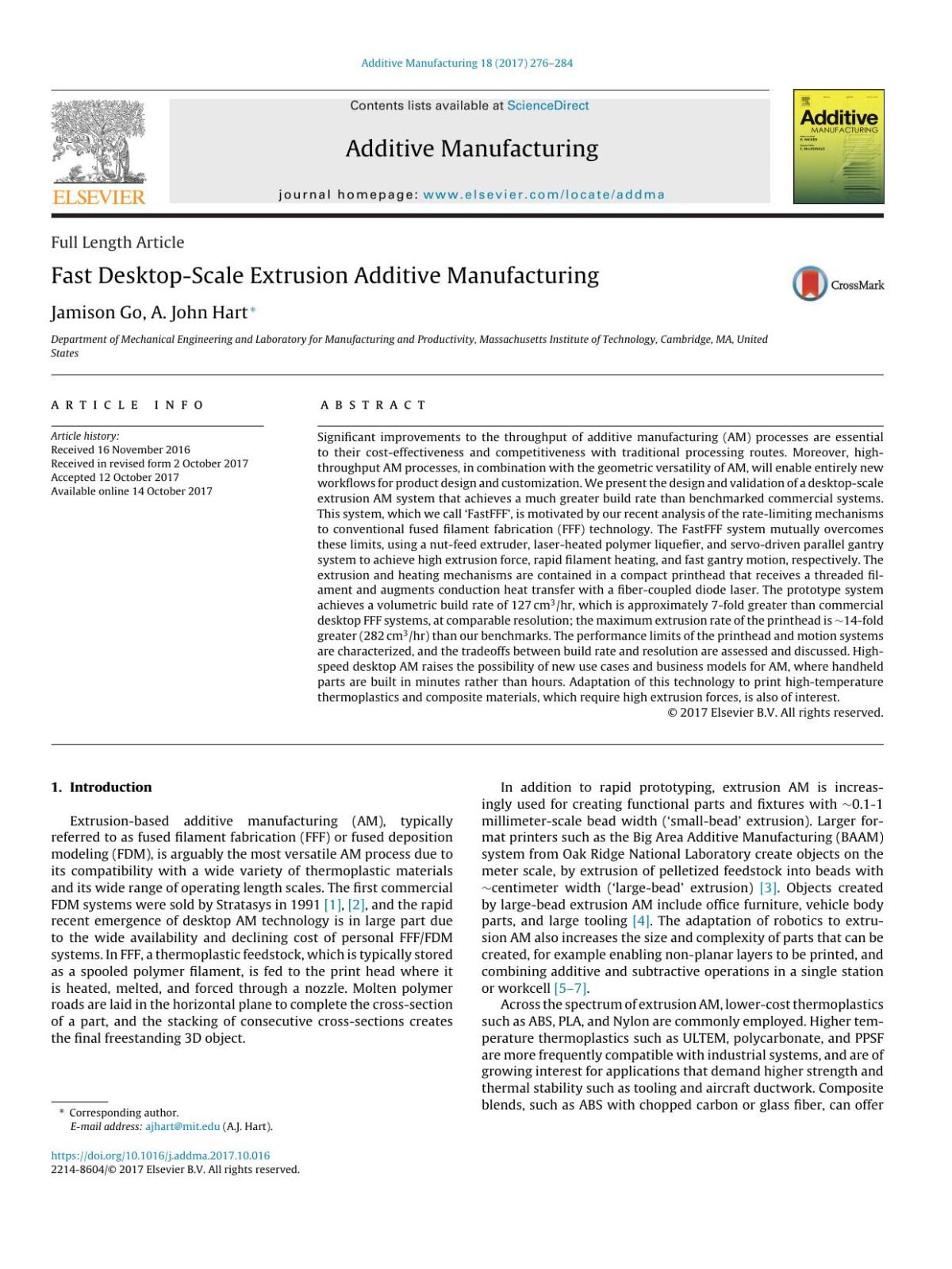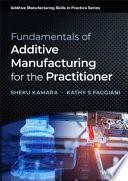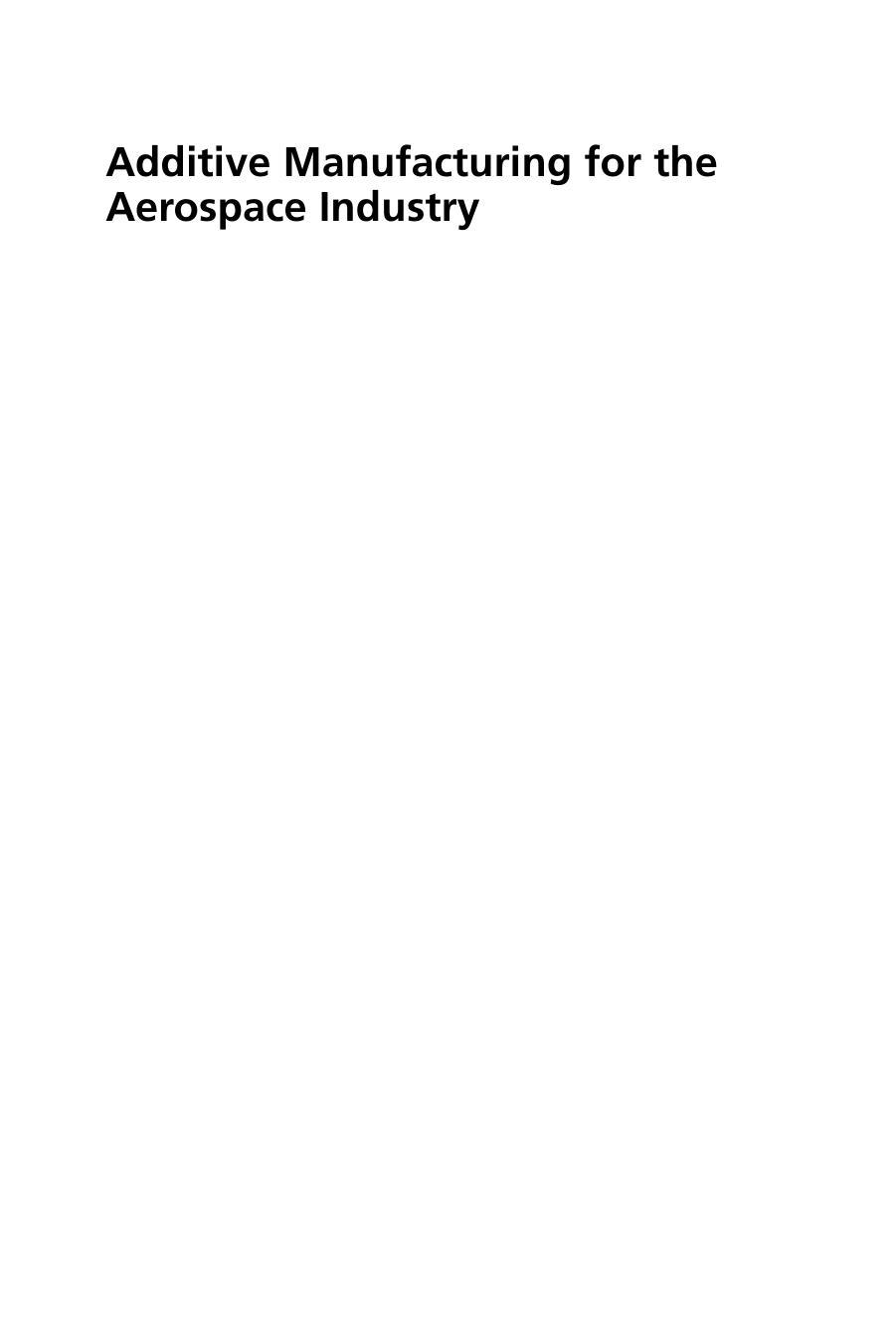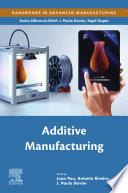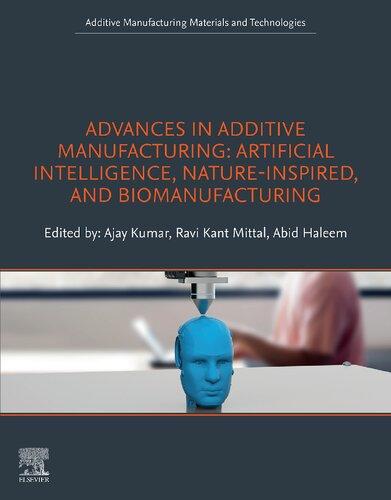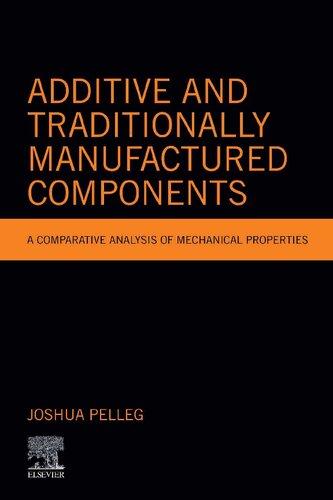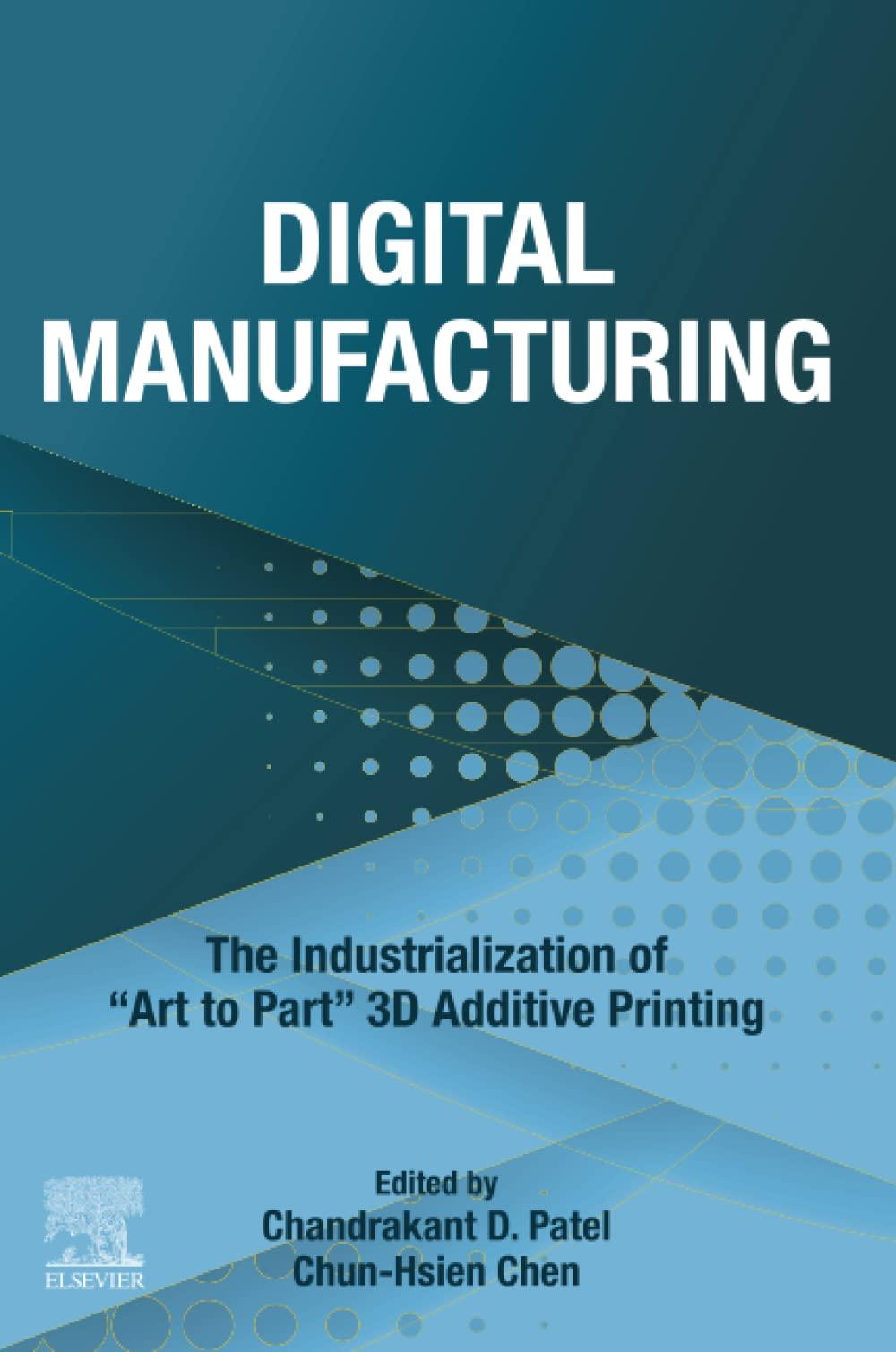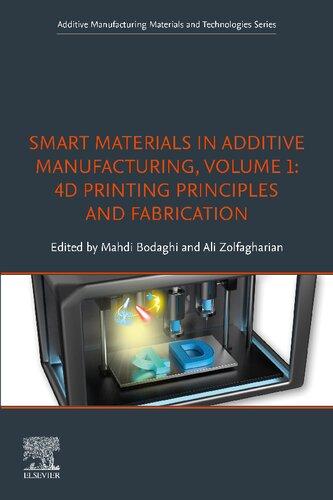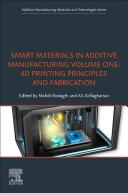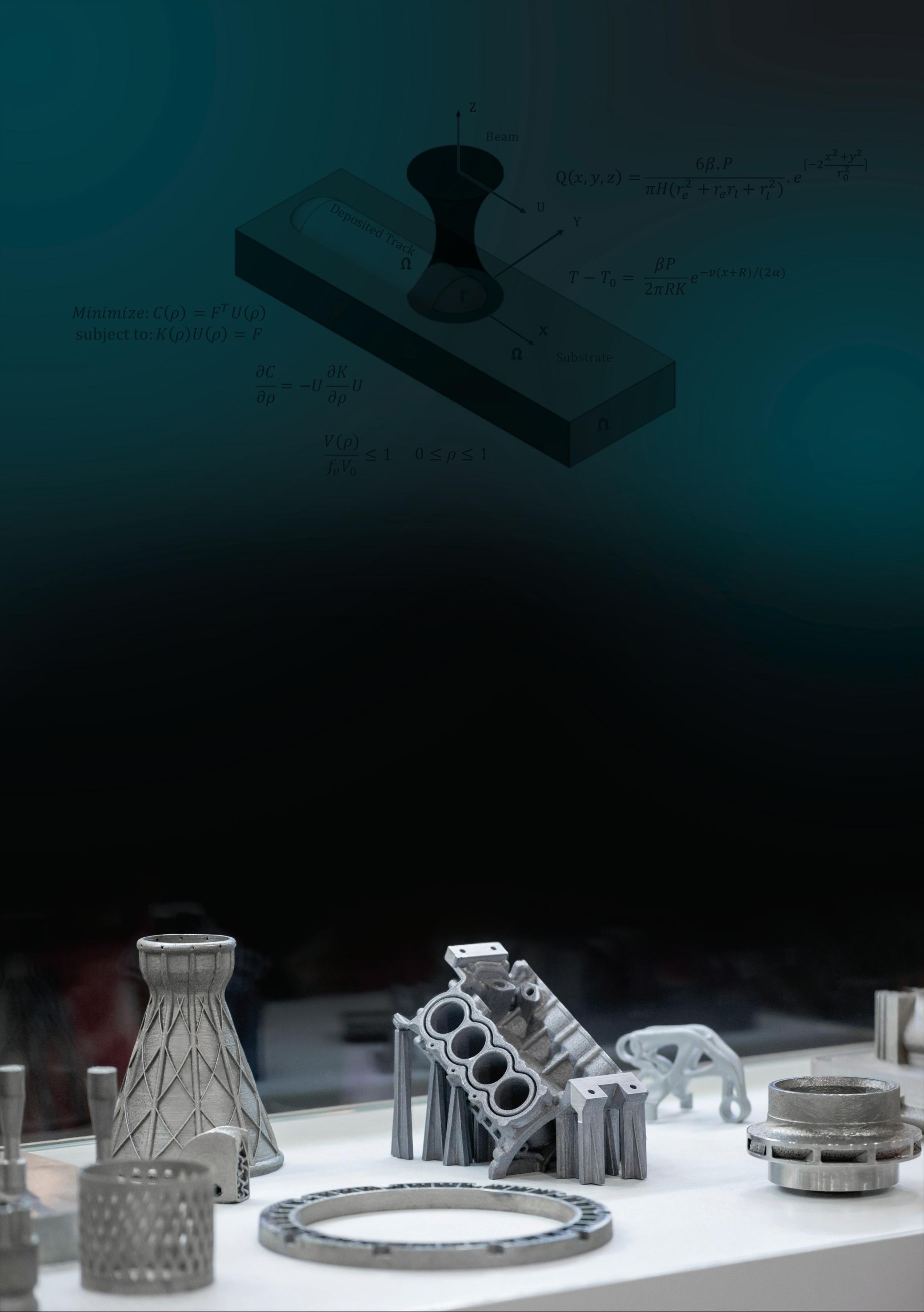METALADDITIVE MANUFACTURING
EhsanToyserkani,DyutiSarker,OsezuaObehiIbhadode, FarzadLiravi,PaolaRusso,KatayoonTaherkhani
UniversityofWaterloo Waterloo,Ontario Canada
Thiseditionfirstpublished2022 ©2022JohnWiley&SonsLtd
Allrightsreserved.Nopartofthispublicationmaybereproduced,storedinaretrievalsystem,ortransmitted,inany formorbyanymeans,electronic,mechanical,photocopying,recordingorotherwise,exceptaspermittedbylaw. Adviceonhowtoobtainpermissiontoreusematerialfromthistitleisavailableathttp://www.wiley.com/go/ permissions.
TherightofEhsanToyserkani,DyutiSarker,OsezuaObehiIbhadode,FarzadLiravi,PaolaRusso,andKatayoon Taherkhanitobeidentifiedastheauthorsofthisworkhasbeenassertedinaccordancewithlaw.
RegisteredOffice
JohnWiley&Sons,Inc.,111RiverStreet,Hoboken,NJ07030,USA
EditorialOffice 111RiverStreet,Hoboken,NJ07030,USA
Fordetailsofourglobaleditorialoffices,customerservices,andmoreinformationaboutWileyproducts,visitusat www.wiley.com.
Wileyalsopublishesitsbooksinavarietyofelectronicformatsandbyprint-on-demand.Somecontentthatappearsin standardprintversionsofthisbookmaynotbeavailableinotherformats.
LimitofLiability/DisclaimerofWarranty
Whilethepublisherandauthorshaveusedtheirbesteffortsinpreparingthiswork,theymakenorepresentationsor warrantieswithrespecttotheaccuracyorcompletenessofthecontentsofthisworkandspecificallydisclaimall warranties,includingwithoutlimitationanyimpliedwarrantiesofmerchantabilityorfitnessforaparticularpurpose.No warrantymaybecreatedorextendedbysalesrepresentatives,writtensalesmaterials,orpromotionalstatementsforthis work.Thefactthatanorganization,website,orproductisreferredtointhisworkasacitationand/orpotentialsourceof furtherinformationdoesnotmeanthatthepublisherandauthorsendorsetheinformationorservicestheorganization, website,orproductmayprovideorrecommendationsitmaymake.Thisworkissoldwiththeunderstandingthatthe publisherisnotengagedinrenderingprofessionalservices.Theadviceandstrategiescontainedhereinmaynotbe suitableforyoursituation.Youshouldconsultwithaspecialistwhereappropriate.Further,readersshouldbeawarethat websiteslistedinthisworkmayhavechangedordisappearedbetweenwhenthisworkwaswrittenandwhenitisread. Neitherthepublishernorauthorsshallbeliableforanylossofprofitoranyothercommercialdamages,includingbut notlimitedtospecial,incidental,consequential,orotherdamages.
LibraryofCongressCataloging-in-PublicationData
Names:Toyserkani,Ehsan,author.|Sarker,Dyuti,1983-author.| Ibhadode,OsezuaObehi,1989-author.|Liravi,Farzad,1990-author.| Russo,Paola,1986-author.|Taherkhani,Katayoon,1989-author.|John Wiley&Sons,publisher.
Title:Metaladditivemanufacturing/EhsanToyserkani,DyutiSarker, OsezuaObehiIbhadode,FarzadLiravi,PaolaRusso,KatayoonTaherkhani.
Description:Hoboken,NJ:Wiley,2021.
Identifiers:LCCN2021028894(print)|LCCN2021028895(ebook)|ISBN 9781119210788(cloth)|ISBN9781119210849(adobepdf)|ISBN 9781119210832(epub)
Subjects:LCSH:Additivemanufacturing.|Metalpowderproducts–Designand construction.|Powdermetallurgy.
Classification:LCCTS183.25.T692021(print)|LCCTS183.25(ebook)| DDC621.9/88–dc23
LCrecordavailableathttps://lccn.loc.gov/2021028894
LCebookrecordavailableathttps://lccn.loc.gov/2021028895
CoverDesign:Wiley
CoverImage:CourtesyofEhsanToyserkani(top);©MarinaGrigorivna/Shutterstock
Setin10/12ptTimesLTStdbyStraive,Pondicherry,India
Inmemoryof ProfessorPearlSullivan(1961–2020)
FormerDeanofFacultyofEngineering,UniversityofWaterloo,Canada
Atrueleader,anexemplaryadvocateforengineeringeducation,andagreatfriend
1AdditiveManufacturingProcessClassification,Applications,Trends, Opportunities,andChallenges1
1.1AdditiveManufacturing:ALong-TermGameChanger1
2.3.1MainOutputParameters
2.3.2CombinedThermalEnergySourceParametersPBFandDED
2.3.3BeamScanningStrategiesandParametersforPBFandDED
2.3.4PowderPropertiesforPBF,DED,andBJ
2.3.5WirePropertiesforDED
2.3.6LayerThicknessforPBF,DED,andBJ
2.3.7AmbientParametersforPBF,DED,andBJ
2.3.8Geometry-SpecificParameters(PBF)
2.3.9SupportStructuresforPBF
2.3.10BinderPropertiesforBJ
2.4.1FerrousAlloys
2.4.2TitaniumAlloys
2.4.3NickelAlloys
2.4.4AluminumAlloys
3.2.1LaserPowderBedFusion(LPBF)
3.2.2LaserDirectedEnergyDeposition(LDED)withBlownPowder KnownasLaserPowder-Fed(LPF)
3.2.3BinderJetting(BJ)
3.3LaserBasics:ImportantParametersNeededtobeKnownforAM93
3.3.1LaserTheory
3.3.2LaserComponents
3.3.3ContinuousVs.PulsedLaser
3.3.4LaserTypes
3.3.5LaserBeamProperties
3.4ElectronBeamBasics114
3.4.1ComparisonsandContrastsbetweenLaserandElectronBeams
3.4.2ElectronBeamPowderBedFusionSetup
3.4.3ElectronBeamMechanism
3.4.4VacuumChambers
3.5PowderFeedersandDeliveryNozzlesTechnology121
3.5.1ClassificationofPowderFeeders
3.5.2PowderDeliveryNozzlesforDED
3.5.3PowderBedDeliveryandSpreadingMechanisms
3.5.4WireFeedSystem
3.5.5PositioningDevicesandScannersinLaser-BasedAM
3.5.6Print-HeadinBinderJetting
3.6CADFileFormats133
3.6.1CAD/CAMSoftware
4DirectedEnergyDeposition(DED):PhysicsandModelingofLaser/Electron BeamMaterialProcessingandDED137 4.1Introduction137
4.2LaserMaterialInteractionandtheAssociatedSignificantParametersto LaserAM140
4.2.1ContinuousVersusPulsed/ModulatedLasers
4.2.2Absorption,Reflection,andTransmissionFactors
4.2.3DependenciesofAbsorptionFactortoWavelengthandTemperature
4.2.4AngleofIncidence
4.2.5SurfaceRoughnessEffects
4.2.6ScatteringEffects
4.3E-beamMaterialInteraction148
4.4PowerDensityandInteractionTimeforVariousHeatSource-based MaterialProcessing149
4.5PhysicalPhenomenaandGoverningEquationsDuringDED150
4.5.1Absorption
4.5.2HeatConduction
4.5.3SurfaceConvectionandRadiation
4.5.4FluidDynamics
4.5.5PhaseTransformation
4.5.6RapidSolidification
4.5.8FlowFieldinDEDwithInjectedPowder
4.6ModelingofDED161
4.6.1AnalyticalModeling:Basics,SimplifiedEquations,andAssumptions 161
4.6.2NumericalModelsforDED
4.6.3Experimental-basedModels:BasicsandApproaches 166
4.7CaseStudiesonCommonModelingPlatformsforDED168
4.7.1LumpedAnalyticalModelforPowder-FedLDED 168
4.7.2ComprehensiveAnalyticalModelforPowder-FedLDED(PF-LDED) 172
4.7.3NumericalModelingofLDED:HeatTransferModel 184
4.7.4ModelingofWire-FedE-beamDED(WF-EDED) 193
4.7.5AStochasticModelforPowder-FedLDED 195 4.8Summary200 References200
5PowderBedFusionProcesses:PhysicsandModeling203
5.1IntroductionandNotestoReaders203
5.2PhysicsofLaserPowderbedFusion(LPBF)204
5.2.1HeatTransferinLPBF:GoverningEquationsandAssumptions 205
5.2.2FluidFlowintheMeltPoolofLPBF:GoverningEquations andAssumptions 215
5.2.3VaporizationandMaterialExpulsion:GoverningEquations andAssumptions 218
5.2.4ThermalResidualStresses:GoverningEquationsandAssumptions 219
5.2.5NumericalModelingofLPBF 220
5.2.6CaseStudiesonCommonLPBFModelingPlatforms 222
5.3PhysicsandModelingofElectronBeamAdditiveManufacturing228
5.3.1ElectronBeamAdditiveManufacturingParameters
5.3.2EmissionsinElectronBeamSources
5.3.3MathematicalDescriptionofFreeElectronCurrent
5.3.4ModelingofElectronBeamPowderBedFusion(EB-PBF)
5.3.5CaseStudies
5.3.6Summary
References251
6BinderJettingandMaterialJetting:PhysicsandModeling255 6.1Introduction255
6.2PhysicsandGoverningEquations257
6.2.1DropletFormation
6.2.2Droplet–SubstrateInteraction
6.2.3BinderImbibition
6.3NumericalModeling270
6.3.1Level-SetModel
6.3.2LatticeBoltzmannMethod
7MaterialExtrusion:PhysicsandModeling279 7.1Introduction279
7.2AnalyticalModelingofME281
7.2.1HeatTransferandOutletTemperature
7.2.2FlowDynamicsandDropPressure
7.2.3DieSwell
7.2.4DepositionandHealing
7.3NumericalModelingofME291 7.4Summary296 References296
8MaterialDesignandConsiderationsforMetalAdditiveManufacturing297
8.1HistoricalBackgroundonMaterials297
8.2MaterialsScience:Structure–PropertyRelationship298
8.3ManufacturingofMetallicMaterials299
8.4SolidificationofMetals:Equilibrium301
8.5SolidificationinAdditiveManufacturing:Non-Equilibrium302
8.6EquilibriumSolidification:TheoryandMechanism304
8.6.1CoolingCurveandPhaseDiagram 304
8.7Non-EquilibriumSolidification:TheoryandMechanism307
8.8SoluteRedistributionandMicrosegregation308
8.9ConstitutionalSupercooling312
8.10NucleationandGrowthKinetics314
8.10.1Nucleation
8.10.2GrowthBehavior
8.11SolidificationMicrostructureinPureMetalsandAlloys321
8.12DirectionalSolidificationinAM324
8.13FactorsAffectingSolidificationinAM325
8.13.1CoolingRate
8.13.2TemperatureGradientandSolidificationRate
8.13.3ProcessParameters
8.13.4SolidificationTemperatureSpan
8.13.5GasInteractions
8.14SolidificationDefects330
8.14.1Porosity
8.15PostSolidificationPhaseTransformation337
8.15.1FerrousAlloys/Steels
8.15.2AlAlloys
8.15.3NickelAlloys/Superalloys
8.15.4TitaniumAlloys
8.16PhasesafterPost-ProcessHeatTreatment357
8.16.1FerrousAlloys
8.16.2AlAlloys
8.16.3NiAlloys
8.17.3FatigueBehaviorofAM-ManufacturedAlloys
8.18Summary371 References375
9AdditiveManufacturingofMetalMatrixComposites383 9.1Introduction383
9.2ConventionalManufacturingTechniquesforMetalMatrix Composites(MMCs)384
9.3AdditiveManufacturingofMetalMatrixComposites(MMCs)385 9.4AMChallengesandOpportunities386
9.5PreparationofCompositeMaterials:MechanicalMixing387
9.6DifferentCategoriesofMMCs389
9.7AdditiveManufacturingofFerrousMatrixComposites390
9.7.1316SS-TiCComposite 390
9.7.2316SS–TiB2 Composite
9.7.3H13–TiB2 Composite
9.7.4H13–TiCComposite
9.7.6Ferrous–
9.8AdditiveManufacturingofTitanium-MatrixComposites(TMCs)395
9.8.1Ti–TiCComposite
9.8.2Ti–TiBComposites
9.8.3Ti–Hydroxyapatite(Ti–HA)Composites
9.8.4Ti-6Al-4V-MetallicGlass(MG)Composites
9.8.5Ti-6Al-4V+B4CPre-alloyedComposites
9.8.6Ti-6Al-4V+MoComposite
9.8.7StructureandPropertiesofDifferentTMCs
9.9AdditiveManufacturingofAluminumMatrixComposites403
9.9.1Al–Fe2O3 Composite
9.9.2AlSi10Mg–SiCComposite
9.9.3AlSi10Mg–TiCComposite
9.9.42024Al–TiB2 Composite
9.9.5AlSi10Mg–TiB2 Composite
9.9.6AA7075–TiB2 Composite
9.10AdditiveManufacturingofNickelMatrixComposites407
9.10.1Inconel625–TiCComposites
9.10.2Inconel625–TiB2 Composite
9.11.1MixingofMatrixandReinforcingElements
9.11.2SizeofReinforcingElements
9.11.3DecompositionTemperature
9.11.4ViscosityandPoreFormation
9.11.5VolumeofReinforcingElementsandPoreFormation
9.11.6BuoyancyEffectsandSurfaceTensionForces
TopologyOptimization
10.1.4MultifunctionalOptimizationMethodologyforDfAM
10.2.1LaserPowderBedFusion(LPBF)
10.6.2DesignandDevelopmentofaStructuralMemberinaSuspension AssemblyUsingEBPowderBedFusion
10.6.3BinderJettingoftheFrameworkofaPartialMetalDenture
10.6.4RedesignofaCrankandConnectingRod
10.6.5RedesignofaMechanicalAssembly
References501
11MonitoringandQualityAssuranceforMetalAdditiveManufacturing507
11.1WhyareClosed-LoopandQualityAssurancePlatformsEssential?507
11.2In-SituSensingDevicesandSetups509
11.2.1TypesofSensorsUsedinMetalAM 509
11.2.2MountingStrategiesforIn-lineMonitoringSensorsinMetal AMSetups 521
11.3CommerciallyAvailableSensors522
11.3.1LPBFCommercialSensors 522
11.3.2LDEDCommercialSensors 525
11.4Signal/DataConditioning,Methodologies,andClassicControllersfor Monitoring,Control,andQualityAssuranceinMetalAMProcesses526
11.4.1Signal/DataConditioningandControllersforMeltPool GeometricalAnalysis 526
11.4.2Signal/DataConditioningandMethodologiesforTemperature MonitoringandAnalysis 531
11.4.3Signal/DataConditioningandMethodologiesfortheDetection ofPorosity 532
11.4.4Signal/DataConditioningandMethodologiesforDetectionof CrackandDelamination 537
11.4.5Signal/DataConditioningandMethodologiesforDetectionof PlasmaPlumeandSpatters 538
11.5MachineLearningforDataAnalyticsandQualityAssuranceinMetalAM539
11.5.1SupervisedLearning 539
11.5.2UnsupervisedLearning 549
Preface
Additivemanufacturing(AM)promisestochangetheentiremanufacturingenterpriseoverthe nexttwodecades.Nolongerlimitedtoprototypingandlow-volumemanufacturing,AMis beingadoptedfor economiesofscale withoutcompromising economiesofscope.Theneed forthedigitizationofmanufacturing,on-demandpersonalizedmanufacturing,distributedproduction,andrapidproductionintheeventofcriseshaveallelevatedthepositionofAMinthe medicalandengineeringsectors.AMisnowamajorresearchtargetforindustrializedcountries astheyseektoregainleadershipinadvancedmanufacturingthroughinnovation.Theglobal economyisonthevergeofthenextindustrialrevolutionandsectoraftersectorispullingaway fromtraditional,conventionalproductionmethodstoengageinandutilizeAM.However,this promisedoescomewithmanychallenges,particularlyformetalAM.Researchanddevelopmentactivitiesareprogressingatfullsteamtoaddressmultipletechnicalchallenges,suchas speedandproductivity,qualityassurance,standards,andend-to-endworkflow.
Amajorskillsetsgapcurrentlyhinderseffortstotacklethesechallenges.Forcompanies seekingtoembraceAM,thisgaptranslatesintoalimitedavailabilityofexpertisetodraw anentrystrategytotheAMindustry.ThewideradoptionofAMwillrequireovercoming thelimitedfoundationalunderstandingofAMthatcurrentlyexistswithintheworkforce. AthoroughunderstandingofAMcapabilitiesisnecessaryfortechnicalexpertstoaccurately communicatetheprosandconsofAMtodecision-makers,whilepreventingmisconceptions andmisinformationaboutAMcapabilities.Currently,theknowledgegapissignificantly impactingprogressinthesector,ascompanieshavedifficultiesinrecruitingAMexpertsto helpthemdevelopeffectivedesignsforAMaswellasmeaningfulbusinesscasesfor metalAM.
Thisbookisdesignedtohelpacademiaandindustrymovetowardfillingthisgap.Enhancing AMskillswillrequirethedevelopmentoffoundationalknowledgeofAMstartingattheundergraduatelevel.Toourknowledge,thereiscurrentlynotextbookavailablethatlinksthebasics offundamentalundergraduateEngineeringcourseswithmetalAMprocesses.Thereisaclear needtocustomizeundergraduateconceptsintechnicalcoursesrelatedtodesign,heattransfer, fluidmechanics,solidmechanics,andcontrol,withrespecttoAMapplications.Additionally, business-andmanagement-orientedcoursesshouldincludeAMtofacilitatetheconsideration
ofAMinconjunctionwithlifecycleassessmentandbusinessmodeldevelopmentsamong students.
Thedevelopmentofthisbookwasmotivatedbyourdesiretoprovidefoundationalmaterial foracoreundergraduatecourseinMechanicalandManufacturingEngineering,andweenvisionitsuseingraduatecoursesaswell.Universitiesgloballyarerevisingtheircurriculumto incorporateAM-relatedcourses.Thistextbookmayprovideanintroductoryplatformtobe adoptedinsuchcoursestopromoteanappreciationforandgraspofAMamongbothundergraduateandgraduatestudents.Thisbookmayalsofillagapforengineersworkingoutside academiawhowanttoappreciateAMprocessesbyidentifyinglinksbetweentraditionalcore physicsandengineeringconceptscoursesandAM.Thebookprovidesastep-by-stepunderstandingofmetalAMandasolidfoundationofthetopicforreaders,whowillsubsequentlybe wellequippedtoexploreAMresearchingreaterdepth.
Forabroadrangeofreaders,thisbookshedslightonvariouskeymetalAMtechnologies, focusingonbasicphysicsandmodeling.Thistextbookisnotaliteraturesurvey,norisit intendedforreaderswithnoengineeringbackground.Incontrast,itisanintroductiontobasic physicalconceptsandphenomenaofmetalAMprocessesandtheirapplications.Relevant foundationalconcepts,suchasenergydeposition,powderbedfusion,andbinderjettingprocesses,areexplainedin-depthandillustratedbycasestudiesthroughoutthebook.Additionally, twoemergingprocessesformetalAM:materialextrusionandmaterialjetting,aredescribed. BasicdesignforAM(DfAM)andqualityassuranceprinciplesarealsocovered.
Wewouldliketoexpressoursinceregratitudetoseveralpeoplewhohelpedinthepreparationofthisbook.SpecialthankstoFrancisDibia,AliKeshavarzkermani,ZhidongZhang, YuzeHuang,MazyarAnsari,AndrewBarlow,MishaKarpinska,DonovanKwong,andEniife Elebute,whohelpeduswithsomematerialsandproducedsomeofthefigures,asattributedin thebook.Inaddition,weacknowledgeallorganizations,publishers,authors,andcompanies thatpermitteduseoftheirfigures,plots,andtexts;theyhavebeencitedaccordinglythroughout thebook.Lastbutnotleast,thankstoourfamilies,whomakeitallworthwhile.
Likeanyfirstedition,thistextbookmaycontainerrorsandtypos.Weopenlywelcomethe reader’ssuggestionstobeconsideredinthesecondeditionofthistextbookinwhichmultiple problemsetsforeachchapterwillbeintroduced.
January2021EhsanToyserkani,DyutiSarker,OsezuaObehiIbhadode,FarzadLiravi, PaolaRusso,KatayoonTaherkhani Waterloo,Ontario,Canada
Abbreviations
2D Two-Dimensional
3D Three-Dimensional
3DQCN Three-DimensionalQuasi-ContinuousNetwork
AI ArtificialIntelligence
AE Auto-Encoder
Al Aluminum
AL AbsoluteLimits
ALE ArbitraryLagrangian–Eulerian
AM AdditiveManufacturing
AMCs AluminumMatrixComposites
AMF AdditiveManufacturingFileFormat
AMGTA AdditiveManufacturerGreenTradeAssociation
ANFIS AdaptiveNeuro-FuzzyInferenceSystem
ANN ArtificialNeuralNetwork
ANOVA AnalysisofVariance
ANSI AmericanNationalStandardsInstitute
APG AbsorptivityProfileGroup
ASCII AmericanStandardCodeForInformationInterchange
ASTM AmericanSocietyforTestingandMaterials
BD BigData
BESO BidirectionalEvolutionaryStructuralOptimization
BJ BinderJetting
BJP BinderJetPrinting
BP Backpropagation
BSE BackscatteredElectrons
CAD Computer-AidedDesign
CAE Computer-AidedEngineering
CAGR CompoundAnnualGrowthRate
CAM Computer-AidedManufacturing
CCD Charged-coupleddevice
CCT ContinuousCoolingTransformation
CDA ConstantDrawingArea
CET Columnar-to-EquiaxedTransition
CFD ComputationalFluidDynamics
CL Cathodoluminescence
CMOS ComplementaryMetal-OxideSemiconductor
CNC ComputerNumericalControl
CNN ConvolutionalNeuralNetwork
COLIN ConvexLinearization
CS CrackSusceptibility
CT ComputedTomography
μCT microComputedTomography
CVD ChemicalVaporDeposition
CW ContinuousWave
DAE Differential-AlgebraicEquation
DBN DeepBeliefNetwork
DC DirectCurrent
DDA DecreasingDrawingArea
DED DirectedEnergyDeposition
DEM Discrete/DynamicElementModel
DfAM DesignforAM
DfM DesignforManufacturing
DHA DustHazardAnalysis
DL DeepLearning
DMLS DirectMetalLaserSintering
DoD Drop-on-Demand
DoG DifferenceofGaussian
DXF DrawingExchangeFormat
EA ElectricalArc
EAM Embedded-AtomMethod
EB ElectronBeam
EBAM ElectronBeamAdditiveManufacturing
EB-DED ElectronBeamDirectedEnergyDeposition
EBF3 ElectronBeamFreeformFabrication
EBF3 ElectronBeamFusion
EBM ElectronBeamMelting
EB-PBF ElectronBeamPowderBedFusion
EDM ElectricalDischargeMachining
EIGA ElectrodeInductionMeltingInertGasAtomization
EKF ExtendedKafmanFilter
ELT EffectiveLayerThickness
EMFs ElectricandMagneticFields
ESO EvolutionaryStructuralOptimization
FBG FiberBraggGratings
FCC FaceCenteredCubic
FCM FiniteCellMethod
FDM FusedDepositionModeling
FE FiniteElement
FEA FiniteElementAnalysis
FEG Field-EmissionGun
FEM FiniteElementMethod
FFT FastFourierTransformation
FGM FunctionallyGradedMaterial
FGSs FunctionallyGradedStructures
FIS FuzzyInferenceSystem
FMC FordMotorCompany
FN FalseNegative
FP FalsePositive
FS FreeSurface
GD GradientDescent
GM GeneralMotors
GMG GeometricallyModifiedGroup
GP GaussianProcess
HA Hydroxyapatite
HAZ Heat-AffectedZone
HDR HeatingDepthRatio
HF HighlyFilled
HIP HotIsostaticPressing
HPM HeavisideProjectionMethod
ICI InlineCoherentImaging
IDAM IndustrializationandDigitizationofAdditiveManufacturing
IDT InterdigitatedTransducers
IN Inconel
IoT InternetofThings
ISO InternationalStandardsOrganization
ISO InternationalStandardsOrganization
KF KafmanFilter
KNN K-nearestneighbors
LaB6 LanthanumHexaboride
LBM Lattice–BoltzmannMethod
LCA LifeCycleAssessment
LCF LowCycleFatigue
LDED LaserDirectedEnergyDeposition
LENS LaserEngineeredNetShaping
LGA LatticeGasAutomata
LM Levenberg–Marquardt
LN LargeNegative
LoF LackofFusion
LP LargePositive
LPBF LaserPowderBedFusion
LPM LaserPowerMonitoring
LSF LevelSetFunctions
LSM LevelSetMethod
LWIR LongWaveInfrared
MAPE MeanAbsolutePredictionError
MC MetalCarbide
MD MolecularDynamics
ME MaterialExtrusion
MG MetallicGlass
MJ MaterialJetting
MMA MethodofMovingAsymptotes
MMCs MetalMatrixComposites
MME MetalMaterialExtrusion
MMP Micro-MachiningProcess
MMV MovingMorphableVoids
MOV MainOxidizerValve
MPC Metal–PolymerComposite
MPE MaximumPermissibleExposure
MPM MeltPoolMonitoring
MS Multi-Speed
MSDS MaterialSafetyDataSheet
MSE MeanSquaredError
MTPS MultifunctionalThermalProtectionSystem
Nd Neodymium
NDT Non-DestructiveTesting
NFPA NationalFireProtectionAssociation
nHA Nano-Hydroxyapatite
NHZ NominalHazardZone
Ni Nickle
NIR Near-Infrared
NIST NationalInstituteofStandardsandTechnology
NN NeuralNetwork
NS Navier–Stokes
OCM OptimalityCriterialMethod
OCT OpticalCoherenceTomography
OEM OriginalEquipmentManufacturers
OPD OpticalPenetrationDepth
OTLs OrthogonalTranslationalLattices
PBF PowderBedFusion
PCA PrincipalComponentAnalysis
PDF PointDistributionFunction
PF Powder-Fed
PI Proportional–Integral
PID Proportional–Integral–Derivative
PMC PolymerMatrixComposite
PMZ PartiallyMeltedZone
PPE PersonalProtectiveEquipment
PPHT Post-ProcessingHeatTreatment
PREP PlasmaRotateElectrodeProcess
PSD ParticleSizeDistribution
PTA-DED PlasmaTransferredArcDirectedEnergyDeposition
PVD PhysicalVaporDeposition
PW PulsedWave
PZT Piezoelectric
R&D Researchanddevelopment
RAMP RationalApproximationofMaterialProperties
RDM RelativeDensityMapping
REP RotatingElectrodeProcess
RF RadioFrequency
RGB Red-Green-Blue
RLS RecursiveLeastSquare
RMSE RootMeanSquareError
RNN RecurrentNeuralNetworks
ROS ReactiveOxygenSpecies
RTE RadiationTransferEquation
SAW SurfaceAcousticWave
SD SignalDynamics
SDAS SecondaryDendriticArmSpacing
SE SecondaryElectrons
SIMP SolidIsotropicMaterialwithPenalization
SINH SineHyperbolicFunction
SL SheetLamination
SLD Super-LuminescentDiode
SLD-OCT Super-LuminescentDiode OpticalCoherenceTomography
SLM SelectiveLaserMelting
SLP SequentialLinearProgramming
SLR Single-LensReflex
SLS SelectiveLaserSintering
SN SmallNegative
SOM Self-OrganizingMap
SP SmallPositive
SQP SequentialQuadraticProgramming
SRAS SpatiallyResolvedAcousticSpectroscopy
STF Short-TermFluctuations
STL StandardTessellationLanguageorStereoLithography
STP StandardfortheProductData
ST-PCA SpatiallyWeightedPrincipalComponentAnalysis
SVD SingularValueDecomposition
SVM SupportVectorMachine
TCP TopologicalClose-Packed
TEM TransverseElectromagneticModes
TGM TemperatureGradientMechanism
Ti Titanium
TiC TitaniumCarbide
Ti-HA Titanium-Hydroxyapatite
TMCs Titanium-MatrixComposites
TN TrueNegative
TP TruePositive
TPMS TriplyPeriodicMinimalSurface
TRL TechnologyReadinessLevel
TTT TransformationTimeTemperature
VC VanadiumCarbides
VED VolumetricEnergyDensity
VoF Volume-of-Fluid
VTM VirtualTemperatureMethod
WF Wire-Fed
WF-EDED Wire-FedElectronBeamDirectedEnergyDeposition
XRD X-RayDiffraction
XRF X-RayFluorescence
YAG YttriumAluminumGarnet
YLF YttriumLithiumFluoride
YVO4 YttriumOrthovanadate
Nomenclature
Unlessotherwisestatedinthetext,thesesymbolshavethefollowingmeanings
a Characteristiclength
a Energybilinearfunctionforinternalenergy(Chapter10)
A Spotarea – heatsourceinteractionarea
A Filamentornozzlecross-sectionarea(Chapter7)
Aat Attenuatedarea
Ac Cross-sectionarea
Aliq jet Intersectionofmeltpoolareaonsubstrateandpowderstream
Ajet Cross-sectionofpowderstreamonsubstrate
AG Propertyoffilamentmaterial
Aij,Bij Einsteincoefficients
AS Surfacearea
b Meltpooldepth
b Bias(Chapter11)
B Sizeofgap(Chapter7)
B Magneticfield
B Differentialshapefunctionmatrix(Chapter10)
c Speedoflight
cp Heatcapacity
cyl FunctionbasedonBesselfunctions
cs Speedofsoundinthefluid
C Dutycycle
C Compliance(Chapter10)
Ca Capillarynumber
Cs Solidcomposition
CL Liquidcomposition
C0 Nominalalloycompositionorsoluteconcentration
d Spotsize
d Euclideandistance(Chapter11)
d0 Dropletdiameter
d3,2 Surfacemeanparticlediameter
dcon Semisphericaldroplet
D Laserbeamdiameter
D Materialmatrix
Df Diffusionconstant
Dijmn Tensorofelasticcoefficients
DL Solutediffusioncoefficient
DØ Diffusioncoefficient
e Whensubscriptorsuperscript,signifiesavariableinitselementalform
ei Vectorpointing
E Laserbeamenergy
E Electricfield(Chapter5)
E Young’smodulusmatrix(Chapter10)
Ea Energyofactivation
Eb E-beamenergy
Ei Inputlaserenergy
Ekin Kineticenergy
Er Reflectedenergy
Et Transmittedenergy
Ei Energylevels(Chapter3)
Especific TheenergyentersthesubstratefromthesurfaceinDED
f Frequency
f Volumefraction(Chapter10)
fs Fractionofsolid
fL Fractionofliquid
f(R)Functionofsurfaceroughness
fi(x, t)Densityofparticlesmovinginthe ei direction
f eq i x, t Equilibriumdistribution
F Force
F0 Fouriernumber
0 Zero-orderBesselfunctionofitsfirstkind
1 Thefirst-orderBesselfunctionofthefirstkind
FCap Capillaryforce
Fst Surfacetensionforce
Fth Thermalstressload
FWet Wettingforce
g Gravity
gi Effectofexternalforces
G Temperaturegradient
GS Gibbsfreeenergyforsolid
GL Gibbsfreeenergyforliquid
Gz Graetznumber
ΔG TotalGibbsfreeenergychange
ΔG∗ Criticalfreeenergychange
ΔGV Freeenergychangeperunitvolume
h Plank’sconstant(Chapter3)
h Heightofahexahedralelement(Chapter10)
hc Heatconvectioncoefficient
hi Convectiveheatloss(cooling)coefficients
ha Averageheattransfercoefficientofconvection
hw Distancebetweenthenozzleandsurface
hr Radiativeheattransfercoefficient
hmin Minimumradiusoftheliquidcolumn
H Barrellengthorheightoftrack
H∗ Heightofthemeltpolymer
ΔH Enthalpydifference
HDR Heatingdepthratio
I Intensity:energyperarea
I Currentinelectronbeam(Chapter5)
I(x)Indicatorfunction(Chapter11)
I0 Intensityscalefactororinitialintensity
Ib Beamcurrentintheelectron-beamprocess
J Freeelectroncurrent
k Propagationfactor
k Equilibriumdistributioncoefficient(Chapter8)
k Solutepartitioncoefficient(Chapter9)
K Thermalconductivity
K Globalstiffnessmatrix(Chapter10)
Kc Conductivitymatrix(Chapter10)
Kh Connectivematrix(Chapter10)
K∗ Modifiedthermalconductivity
K0 Besselfunctionofthesecondkindandzeroorder
l Layerthickness
l Loadlinearfunctionforexternalwork(Chapter10)
L Transformationmatrix
L Linkintensity
Lc Characteristiclengthbasedondomainsize
Lf Latentheatoffusion
Lp
l Laguerrepolynomialoforderpandindexl
m Atomicmass
mb Massoftheball(Chapter9)
mb Depositedbinder(Chapter6)
mp Particlemass
mp Massoftheboundpowder(Chapter6)
mf Fluidmass
m Massflowrate
M2 Beamqualityfactor
Ma Marangoninumber
n Reflection’sindex
N Matrixofshapefunctionformeshelement
Ni Numberofatomsorelectronsperunitvolumeintheenergylevels
NL Amountofatomsperunitvolumeofliquid
Nlx Neumannfunction
NS Amountofatomsperunitvolumeofsolid
Nu Nusseltnumber
Nth Shapevectorforthermalexpansion
Oh Ohnesorgenumber
p Constantcharacteristicofthematerial(Chapter4)
p Pressure
p Penaltyvalue(Chapter10)
pc Capillaryforce
Pf Packingfraction
P Power
Pat Attenuatedlaserpowerbyparticles
Pel PowerofelectricalmotorinFDMsystem
Pl Net/averagelaserpower
Ppeak Peakpowerperpulse
Pon Onthestateofthelaserpower
Poff Offstateofthelaserpower
Ptot Totaldeliveredbeampower
Pe Pecletnumber
Pr Prandtlnumber
PR Packingdensityofthepowder
PW Pulsedwavelaser
P(∞)Valueoftheextrudatepropertyafteraninfinitehealingtime
q Heatflux
Q Powergeneratedperunitvolume(inallchaptersexceptChapter3)
Q Beampropagationfactor(Chapter3)
Qc Totalenergyabsorbedbythesubstrate
Qext Extinctcoefficient
Ql Laserenergy
Qrs Reflectedenergyfromthesubstrate
QL Latentenergyoffusion
Qv Volumetricflowrate
r Radiusofnucleus(Chapter8)
r ∗ Criticalnucleusradius
rb Ballmillradius
rf Filamentradius
r0l Beamradiusofthewaist
rjet Radiusofpowdersprayjet
rl Beamspotradiusonthesubstrate
rs Powderstreamdiameter
rp Powderparticleradius
R Reflectivity
R Solidificationratewhereitisreferredto
Rc Cladsurfacecurvature
Rcur Radiusofcurvature
Re Reynoldsnumber
Re∗ Property-basedReynoldsnumber
Rh Heatloadbyconvection
Rh(t)Intrinsichealingfunction
RL Localgrowthrate
RN Nominalgrowthrate
Rr Radiusoftheactuatingmotor
Rpore Effectiveporediameterinthebed
Rq Heatloadbysurfaceconduction
RQ Heatloadbyvolumeconduction
s Hatchspacing
s0 Specificsurfacearea
S Bindersaturation
Sij Lateraldistancebetweenneuron i and j (Chapter11)
Smax Spreadingratio
Smeas Amountofsignal(Chapter11)
SØ SourcetermcorrespondingtoØ
S (ϕ)Shapefactor
SS Scanspeed
S Strainratedeformationtensor
ΔS Expansionofsurfacearea
t Timeand/orlaserinteractiontime
t∗ Dimensionlesstime
tc = tμ Viscoustime
tCDA Correspondingpenetrationtime
tf Solidificationtime
tI Inertial-capillarytime
tV Viscous-capillarytime
T Temperature
Tα Referencetemperature
Tave Averagetemperature
Tin Filamenttemperature
Tg Glasstransitiontemperature
Tout Outlettemperature
T m Temperatureoftheliquefierwall
Td Dryingtime
Te Equilibriumtemperature
Tl Liquidustemperature
T0 Ambienttemperature
Tm Materialsmeltingpoint
Tp Maximumtemperature
ΔT Undercoolingtemperature
ΔTtot Totalundercoolingtemperature
ΔTC Undercoolingtemperature:solutediffusion
ΔTT Undercoolingtemperature:thermaldiffusion
ΔTK Undercoolingtemperature:attachmentkinetics
ΔTR Undercoolingtemperature:solid–liquidboundarycurvature
TEMpl Gaussian–Laguerretransverseelectromagneticmodes
U Beamvelocity
U Travelvelocityvector
U Globaldisplacementvector(Chapter10)
Up Particlevelocityvector
Us Rateofsolidification
v Scanningspeed
vc Collisionvelocity
υj Jetvelocity
vp Velocityoftheparticle
vprint Velocityoftheprinthead
V Volumeofmeltpool
V Designvolume(Chapter10)
Va Accelerationvoltage
VS Volumeofnucleus
VED TheenergyentersthesubstratefromthesurfaceinLPBF
w Trackormeltpoolwidth
w Neuronweight(Chapter11)
wi Weightfactor
W Laserpulsewidth
We Webernumber
Xs + c Weightpercentofelement X inthetotalsurfaceofthecladregion
Xc Weightpercentofelement X inthepowderalloy
Xs Weightpercentofelement X inthesubstrate
y Dendritearmspacing(Chapter8)
z Distancefromthesurface
z0 Waistlocationwithrespecttoanarbitrarycoordinatealongthepropagationaxis
Z Printabilityofaliquid
Zh Heatpenetrationdepth
GreekSymbols
α Thermaldiffusivity
αt Coefficientofthermalexpansion
β Absorptionfactor
β Absorptionfactor
β p Powderparticles’ absorbedcoefficient
β w Substratelaserpowerabsorptivity
γ Surfacetension
γ Netelectronbeamenergy(Chapter5)
γ E Specificsurfaceenergy
γ SL Solid–liquidinterfacialfreeenergy
γ SV Solid–vaporinterfacialenergy
γ LV Liquid–vaporinterfacialenergy
γ Shearrate
Γ TorqueofelectricalmotorsinFDM
Γ Surfacefunction(Chapter10)
δ Solid/liquidinterfacethickness
δ Diracdeltafunction(Chapter6)
ε Totalstrain
εc Coolingrate
εt Emissivity
ε M Mechanicalstrains
ε T Thermalstrains
εp Equivalentplasticstress
ε0 Vacuumpermittivity
εm Mechanicalstrain
εth Thermalstrain
Σ Covariancematrix
η Dynamicviscosity
η Powdercatchmentefficiency(whereveritreferstothroughoutchapters)
η NumericaldampingcoefficientforOCM(Chapter10)
η Learningrate(Chapter11)
ηe Absorptionefficiencyforelectronbeam
ηd Dynamicviscosity
ηp Powdercatchmentefficiency
θ Representingdifferentanglesbasedonfigures
θ Wettingangle(Chapter2)
θ Far-fielddivergenceangle(Chapter3)
θ Dimensionlesstemperatureinnumericalmodels(Chapter7)
θ jet Anglebetweenpowderjetandsubstrate
θ d Dynamicwettingangle
θ eq Steady-stateangle
Θ Dimensionlesstempinanalyticalmodels
λ Wavelength
λ Lagrangemultiplier(Chapter10)
λn Rootsofzero-orderBesselfunctionofitsfirstkind
μ Viscosity
μ Membershipfunction(Chapter11)
υ Frequency(Chapter3)
υ Kinematicviscosity
ρ Density
ρb Densityofbinder
ρpb Powderbeddensity
ρc Densityofmeltedpowderalloy
ρs Densityofsubstratematerial
ρs Packingdensityofthepores(Chapter6)
σ Stefan–Boltzmannconstant
σ Covariance(Chapter11)
σ c Chargedensity
σ ij Elasticstress
τ Thermaltimeconstant
τ c Dimensionlesscapillarytime
ϕ Differentlabelforanglesasindicatedintheassociatedfigures
